I wasn’t planning to reinvent my gyoza (Japanese Dumplings) recipe.
Last year, on one of my farmers market runs, I stumbled across a booth run by local high school students. I couldn’t resist supporting them and taking home several very large bundles of collard greens.
But what to do with them? Half went into a big pot of Southern-style greens (because yes, I eat more than just sushi). The rest I saved because I wanted to try something new. Using them as a sushi wrapper? Pickling them? Worthy ideas but I got really excited testing them out in gyoza. I wondered what would happen if I swapped them in for the cabbage in gyoza.
The result surprised me in the best way. The collard greens added a little bit of a bite and depth. And the added bonus was incorporating a bit of Southern charm to one of my favorite Japanese comfort foods. I loved the swap so much, I’ve been making them that way ever since.
Gyoza is one of those foods that rewards repetition. It’s humble, cozy, and deeply satisfying. In this bonus edition, I’m sharing a few of my go-to plant-based fillings, the wrappers I use (yes, store-bought is fine!), and how to get that signature crispy-bottom, tender-top texture just right.

Gyoza - Japanese Potstickers
Gyoza (pronounced gyoh-zah) are Japanese dumplings, often called Japanese potstickers, that you’ve likely seen as appetizers at sushi bars or on the menu at your favorite Japanese restaurants. Traditionally filled with a savory mix of ground meat and vegetables, they’re pan-fried to create a golden, crispy bottom, then steamed to keep the top tender and juicy.
You can absolutely find premade gyoza in the freezer section of most mainstream grocery stores, but this is one of those instances where homemade is definitely better. Making them yourself opens up a world of possibilities. You can customize the fillings and play with flavors. Most recipes make 25–30 dumplings providing plenty for snacking now and freezing for later.
Gyoza are one of my favorite foods to make not only because they’re delicious, but because they invite you to slow down, use your hands, and create something deeply comforting. In this bonus edition, I’m sharing three of my go-to plant-based fillings, each one flavorful and easy to make your own.
Ingredient Spotlight: Gyoza Wrappers
Making your own gyoza, while not difficult, can be time consuming. I recommend keeping things approachable with store-bought gyoza wrappers. I almost always use store bought wrappers because they produce great results.
Gyoza wrappers are usually round, though you can also find square ones. Either shape work beautifully. The wrappers themselves are typically made with just flour and water. They’re often labeled as gyoza wrappers or potsticker wrappers, and you can usually find them in the refrigerated or frozen section of well-stocked grocery stores or Asian markets.

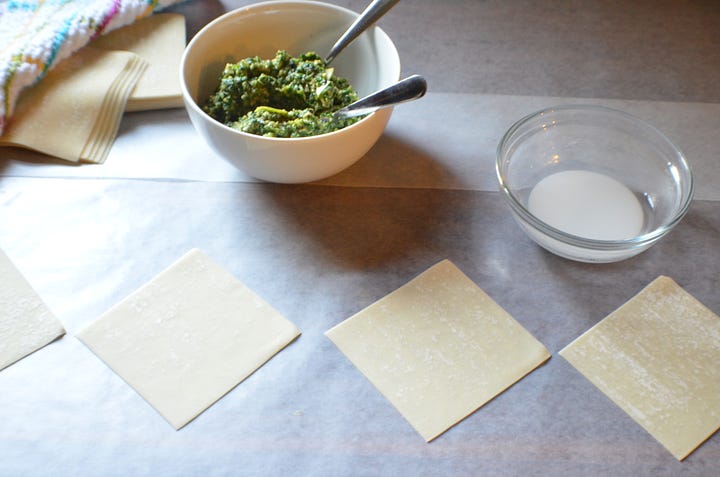
Note: Not all dumpling wrappers are created equal. Some contain egg, so if you're plant-based be sure to double-check the label.
Handling Gyoza Wrappers
If your gyoza wrappers are frozen, allow them to thaw overnight in the fridge.
Always keep them covered with a damp towel while working to prevent drying out.
Folding & Cooking Gyoza

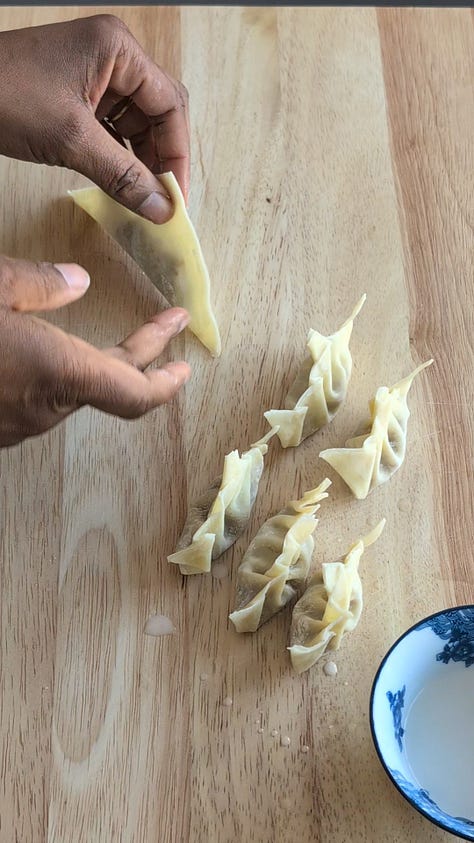
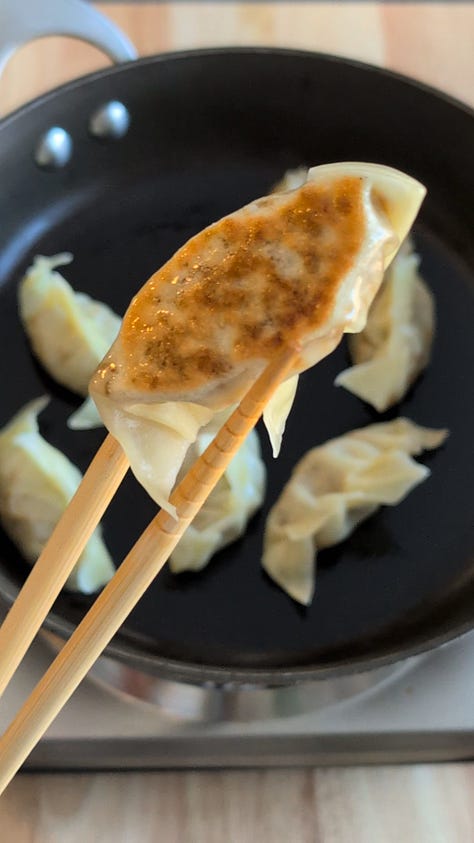
Forming
Start by adding a spoonful of filling to the center of a gyoza wrapper. Be sure not to overfill it! Wet the edges with a little water or potato starch slurry.
Folding
Folding gyoza doesn’t have to be fancy. The key is keeping them sealed. Fold the wrapper in half to create a half-moon shape and press to seal. Once you get the hang of it, you can crimp the edges for that classic look. Either way, the gyoza will taste just as good.
Cooking
Cooking gyoza is part pan-frying and part steam cooking. Start by crisping the bottoms in a hot skillet with a little oil, then add water and cover the pan to steam them through.
3 Tasty Fillings
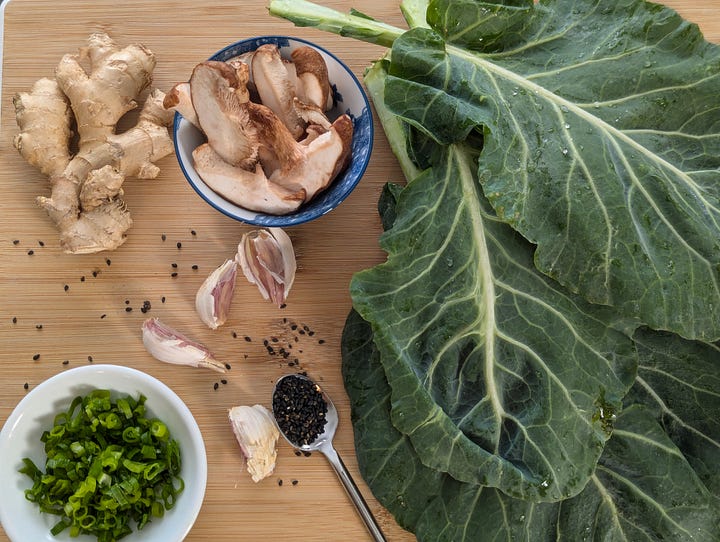
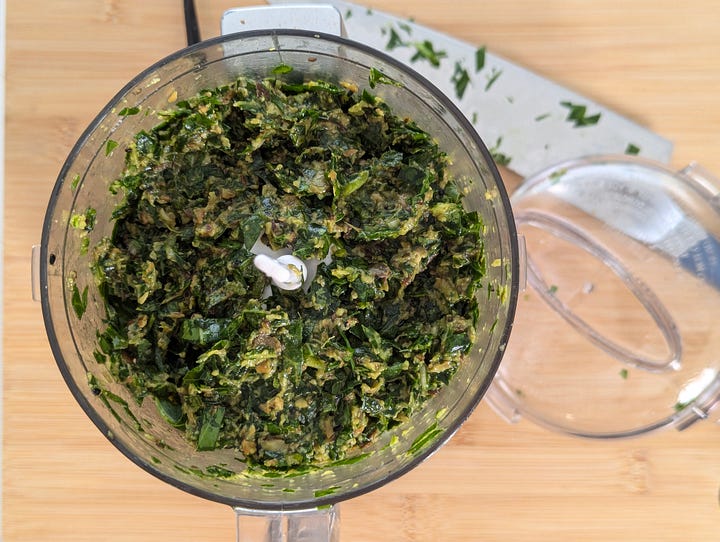
There’s something deeply satisfying about folding dumplings with a filling you made yourself, especially when it’s one that feels a little unexpected. In the DIY Gyoza PDF, you’ll find full recipes for three plant-based gyoza fillings that are flavorful and flexible. Feel free to swap out ingredients. You may end up finding your new go-to like I did!
(Almost) Classic
A simple but flavorful classic, with a Southern twist. Hearty collard greens bring a satisfying bite, though you can easily swap in green cabbage.
Kimchi + Tofu
Bold, spicy, and packed with flavor. Perfect for spice lovers.
Vegan Beef + Truffle Oil
Deep and savory with a hint of decadence. A plant-based ground “beef” gives this filling meaty richness, while a dash of truffle oil adds elegance and depth.
Dipping Sauces
You’ll also find a few go-to dipping sauces in the DIY Gyoza PDF. Simple, flavorful blends that pair beautifully with each filling. Whether you love a classic soy-vinegar combo or want to try something sweet and spicy, you’ll have options that elevate every bite.
Grab the Full Recipes
Ready to make your own gyoza? The DIY Gyoza PDF includes:
Recipes for all three fillings
Assembly tips to keep it simple
Pan-fry + steam cooking method
Three dipping sauce recipes
Extra tips for making ahead and freezing
Whether it’s your first time making dumplings or your go-to comfort dish, this guide is designed to help you make them your own.


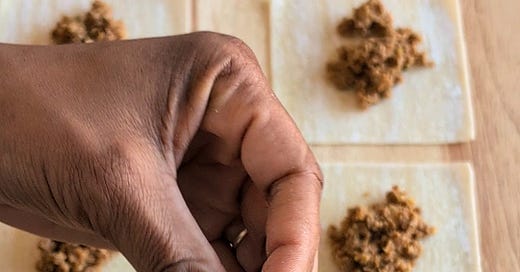




They look so good! I struggle to find gluten free wrappers in the UK. Do you know of a brand that does them?
Your ode to gyoza is absolutely delightful! It’s a beautiful blend of passion for food and an invitation to explore creativity in the kitchen. The idea of taking time to slow down, fold, and craft these dumplings is deeply satisfying—it’s about enjoying the process as much as the result.